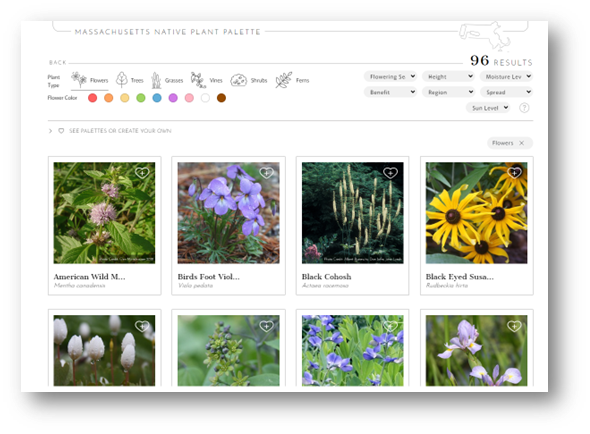The Top Five Reasons for Landscaping with Native Plants
- Drought Resistance
- Native plants are adapted to local climate conditions, making them more resilient to drought. They typically have deeper root systems that can access groundwater, reducing the need for supplemental irrigation.
- Water Retention
- Many native plants have evolved to thrive in their specific ecosystems, allowing them to effectively utilize available water. Their growth patterns and root structures help maintain moisture levels in the soil.
- Ecosystem Support
- Native plants provide essential habitats and food sources for local wildlife, including pollinators, birds, and other organisms. This biodiversity helps maintain balanced ecosystems that are more resilient to environmental changes.
- Erosion Control
- The extensive root systems of native plants stabilize the soil, preventing erosion. This is especially important in areas prone to runoff, where soil and nutrients can wash away, leading to water quality issues. Native plants contribute to healthier soil by promoting microbial diversity and improving soil structure. This helps retain moisture further enhancing water conservation.
- Natural Pollination
- When we use native plants in our gardens and watersheds, they often attract native pollinators, such as bees and butterflies, which are essential for the reproduction of many plant species.
Visit Growing Wild Massachusetts for more information about how you can create biological diversity, foster and protect endangered species and add to the natural beauty of our Commonwealth right in your own backyard!
Native Plants and Watershed Management
By supporting diverse wildlife and fostering ecosystem resilience, native plants play a crucial role in maintaining the health and sustainability of watersheds, making them essential for both environmental and community well-being.
We are not only making our surroundings look beautiful by choosing native plants, but we are also helping to protect the environment and support the creatures that call Massachusetts home.
It's a win-win for everyone!
Ok, I’m convinced and want to help out. How do I get started?
The MA Native Plant Palette is a new website application that will allow residents to explore native plants and create lists ("plant palettes") which they can then bring with them to their local nurseries or garden centers. You can sort by color, height, flowering season, sun level and many other aspects of the plant’s natural history.
Additional Resources
- Choosing Pollinator-Friendly Native Plants in Home Gardening or Landscaping
- Pollinator’s Plight - Native plants provide nectar in exchange for the delivery of pollen...but a challenge looms for this sweet arrangement: a StoryMap by the Division of Water Supply Protection
- Protecting the Monarch Butterfly: a Video by the Division of Water Supply Protection
- Wachusett Reservoir Pollinator Hike: A Guide for the North Dike and Pollinator Meadow Loop
- Managing the Wachusett Dikes for Grassland Birds and Pollinators: Downstream Newsletter


